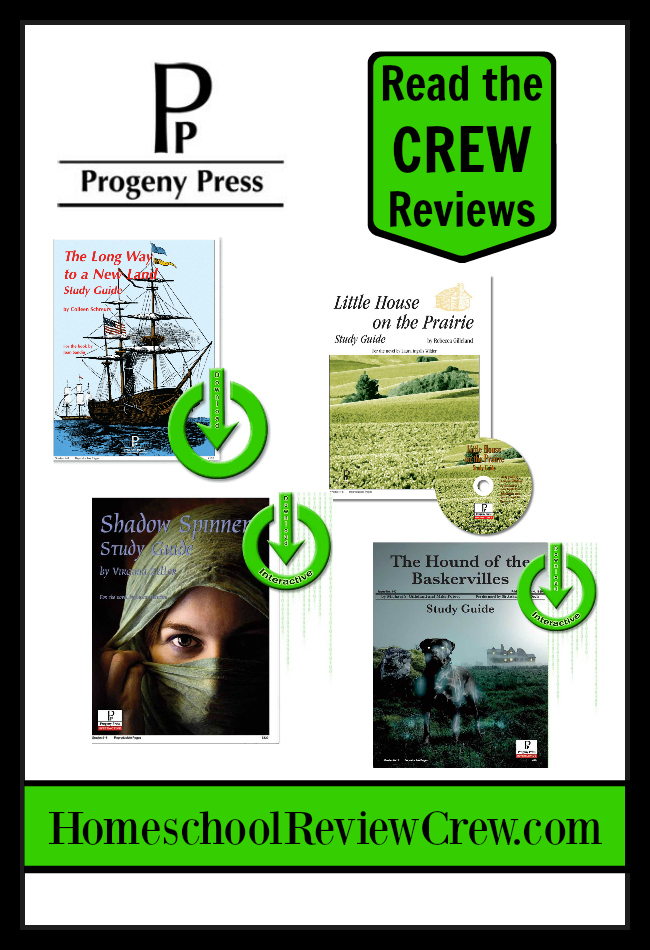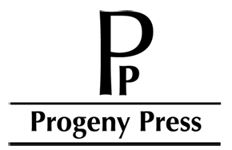Our family loves reading. Literature is the foundation of our education, so we always appreciate reviewing products that are based around books. There's something very special about opening a story and getting lost in its pages together as a family.
When we want to take our learning deeper than just simply reading the book, we utilize the help of study guides. These aids enrich the experience and help the reader fully grasp the themes within the pages. One of our favorite companies to use for this purpose is Progeny Press. We've used their products multiple times in the past and were excited to work with them again. This time, we were able to use two of their downloadable resources: The Long Way to a New Land Study Guide and the Little House on the Prairie Study Guide.
When we want to take our learning deeper than just simply reading the book, we utilize the help of study guides. These aids enrich the experience and help the reader fully grasp the themes within the pages. One of our favorite companies to use for this purpose is Progeny Press. We've used their products multiple times in the past and were excited to work with them again. This time, we were able to use two of their downloadable resources: The Long Way to a New Land Study Guide and the Little House on the Prairie Study Guide.
Progeny Press is a Christian company owned by Michael and Rebecca Gilleland. It is their mission to "teach our children to think clearly, to understand literature, and to rely on the scripture for truth and values, and enjoy themselves while they do it!" They offer more than 100 study guides for classic, popular, and award-winning books. The guides are designed to help students better understand and enjoy literature by getting them to think through the themes and ideas written in the stories. The study guides are available in three formats: a physical book, a CD with a PDF ebook, and a downloadable PDF file.
The Long Way to a New Land Study Guide is designed for grades K-3. The guide accompanies the book by Joan Sandin. The Long Way to a New Land is a short chapter book for young readers and has roughly 65 pages with pictures on each page or spread and a large font. The story takes place in 1868 as Carl Erik and his family faced starvation during the "hunger years" in Sweden. When all the grass and crops dried up and the cows could no longer give milk, the family realized it was hopeless to stay in their homeland. They packed needed belongings and sold what they could in order to purchase boat tickets for America. The story follows their journey as they dealt with crowded spaces, smelly living quarters, sickness, and the unknown--all for the hope that this new land offered.
The study guide has 50 pages of learning activities. It starts with a synopsis of the book, background information, and details about the author. There are a handful of Before-You-Read activities including vocabulary words, a family tree, map work, the history of steamships, and more. The guide is then broken into sections that correspond with the chapters of the book. Each chapter highlights vocabulary using matching, fill-in-the-blank, short answer, synonyms, and more. There are also things to teach cause and effect, early grammar skills, emotions, inventions, and questions to make the reader think, along with some fun pages like a crossword puzzle and word search.
The chapters also have Bible verses that complement the lessons in the story in the Dig Deeper sections. The verses are written out in the guide itself, but we chose to pull out our KJV and read directly from the Bible. There are also questions that accompany the verses and reinforce the themes.
The study continues even after the story is finished by learning from the illustrations, looking at the story, and After-You-Read activities. The guide ends with suggestions for further reading of other books by the author and those of related interest for the age range. A full answer key is at the end.
My younger boys (ages 9, 7, 4) and I completed this study together. They especially enjoyed the story because their great-grandfather emigrated from Sweden, just like Carl Erik and his family. This account helped them to understand the difficulties their ancestors experienced and appreciate their sacrifices. The book explains the hardships in a way that perfect for this age group. The boys and I would read a chapter and then complete a page or two each day from the guide. We printed out some pages for them to complete, but we answered the majority of the questions together aloud.
Because we like to learn as a family as much as possible, I chose a second study guide. The Little House on the Prairie Study Guide is for the 4th-6th grade group and has 62 pages. My kids range from preschool-9th grade, but everyone can benefit from spending time together getting lost in the pages of a book. Many people are familiar with the beloved Little House on the Prairie books. This one, the third in the series, follows the Ingalls family as they leave their little house in the big woods and travel from Wisconsin to the prairie of Kansas. The account greatly details how they built their life--from cutting the trees to carrying river rocks to pegging doors and making a rocking chair with only sticks. Everything they had was found in the land around them. The story is one of hard work and determination, but also one of hope, brotherly love, and acceptance.
The guide begins with the same type of sections as the other (synopsis, author and background information, and pre-reading activities), but then suggests reading the entire book before delving into the meat of the study. This format worked well for us as the kids got to simply enjoy the story without stopping to work. There were a few times when we had to go back to review parts of the story where they didn't remember exactly, but that's all part of the process.
This guide for the upper elementary includes vocabulary skills and comprehension questions, but they are more difficult than the lower level. Also, this guide has an editable PDF so a student can type the answers directly without having to print it out. Because of that option, a separate file with the answer key is given, so a student does not have access to the answers himself. Another way that this level is different is that the Bible verses are not written out, encouraging the learner to grab his Bible to look them up himself. There are a lot of "what do you think," "what does this mean,'' "why or why not" questions.
Other activities include making cornbread (which my 11-year-old daughter made by herself) and molasses milk, watching some Little House episodes (now a new favorite show for the kids!), learning about fire drills, visiting a farmer's market, creating an inside-out Christmas list (a great tradition to start), cutting out paper dolls, and listening to fiddle music. The study covers art, music, writing, science, dramatic story-telling, history, games, fun, and more. This unit study type of approach assures that there's something for each kind of learner.
As always, my kids enjoyed these studies from Progeny Press. We had many thoughtful conversations about life of the past and how blessed we are now. The books were a good reminder that we could live a simpler lifestyle with many fewer possessions and that we take too much for granted. We make family read aloud part of of regular schooling, but it's good to take our learning deeper. I appreciate that these guides incorporate Bible lessons to help kids see a deeper meaning behind the stories.Whenever you can apply a lesson, rather than just hear about it, it's much more likely to make a lasting difference.
Even though we reviewed elementary guides, Progeny Press offers many study guides ranging from kindergarten all the way through 12th grade and cover many popular books. There truly is something for everyone. If you have older students, make sure to check out the upper level guides, as well. Their resources are greatly enjoyed in our home.
You can connect with Progeny Press on the following social media sites:
Be sure to head to the Homeschool Review Crew blog to read more reviews of these study guides and more offered by Progeny Press.







No comments:
Post a Comment